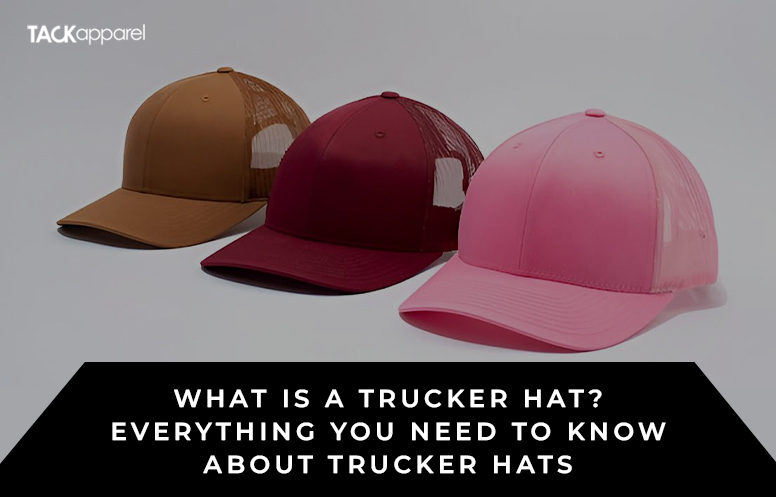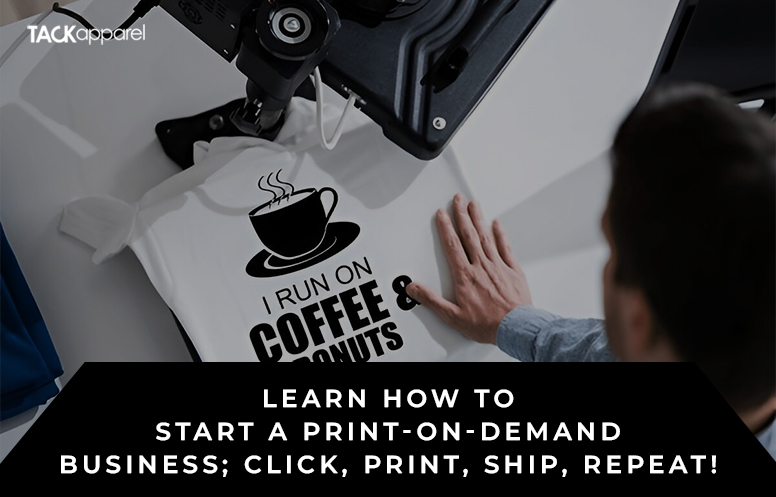When making personalized clothing, one of the most important choices you can make as a manufacturer is the best way to include designs. Embroidery and screen printing are two common choices; both have their advantages and disadvantages. Here, we’ll examine the similarities and differences between the two approaches so you can choose the one that works best for you.
What Is Basically Printing And Embroidery?
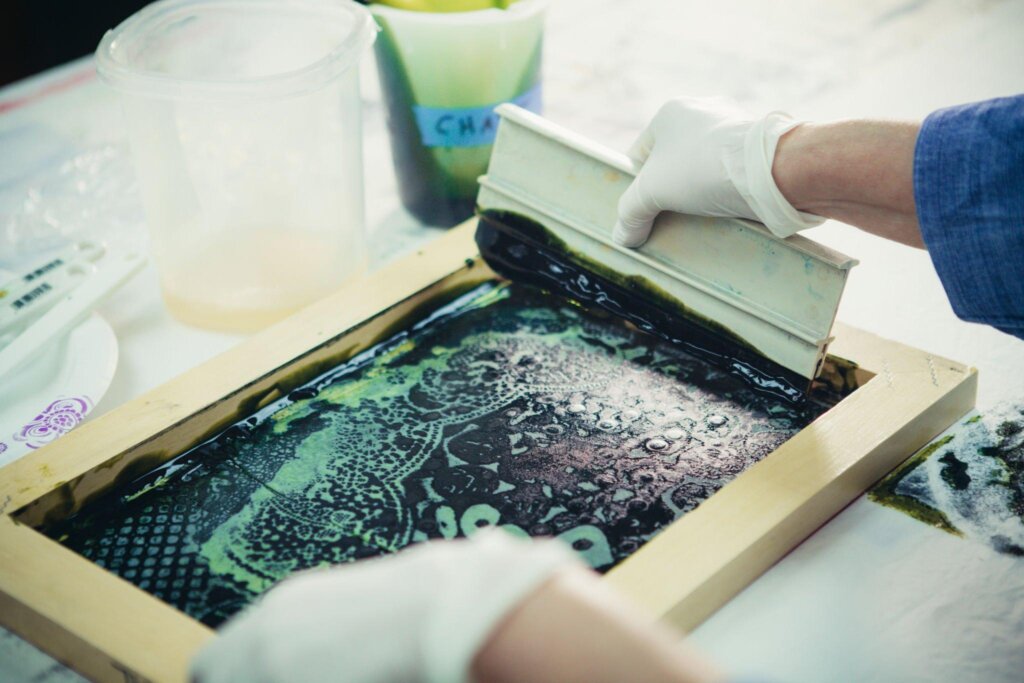
In embroidery, thread is used to stitch the design onto the fabric. This approach provides a sophisticated vibe and works wonderfully for designs with delicate features or tiny lettering. Since the embroidery thread is sewn right into the cloth, it is also highly sturdy and long-lasting. Embroidery is also a flexible choice because it can be done on a wide range of materials, from cotton and denim to leather.
In contrast, screen printing involves physically pressing ink through a stencil onto the fabric. This technique is frequently used for team uniforms and promotional gear, and it works particularly well for large, bold designs with brilliant colors. Screen printing is a cost-effective method for decorating a large number of garments because it can be done fast and efficiently. Screen printing is a popular method of getting designs onto clothing, but the ink used in the process can crack and fade after repeated washings or exposure to direct sunlight.
There are a number of aspects to consider while choosing between printing and embroidering. Embroidery is a great option if you want something that looks expensive and will last a long time. Screen printing is a viable option if your design is vast or you need to produce many clothes rapidly. Fabric choice is also important; while screen printing works well on cotton and wool, needlework may be more appropriate for materials like leather and silk.
Direct-to-garment (DTG) printing, or digital printing, is yet another choice. This technique, which includes printing designs directly into the fabric with a specialized printer, is particularly well-suited to intricate designs and pictures. Printing DTG vs embroidery is more expensive than embroidery or screen printing, but it delivers greater detail and color precision.
Screen Print Vs Embroidery
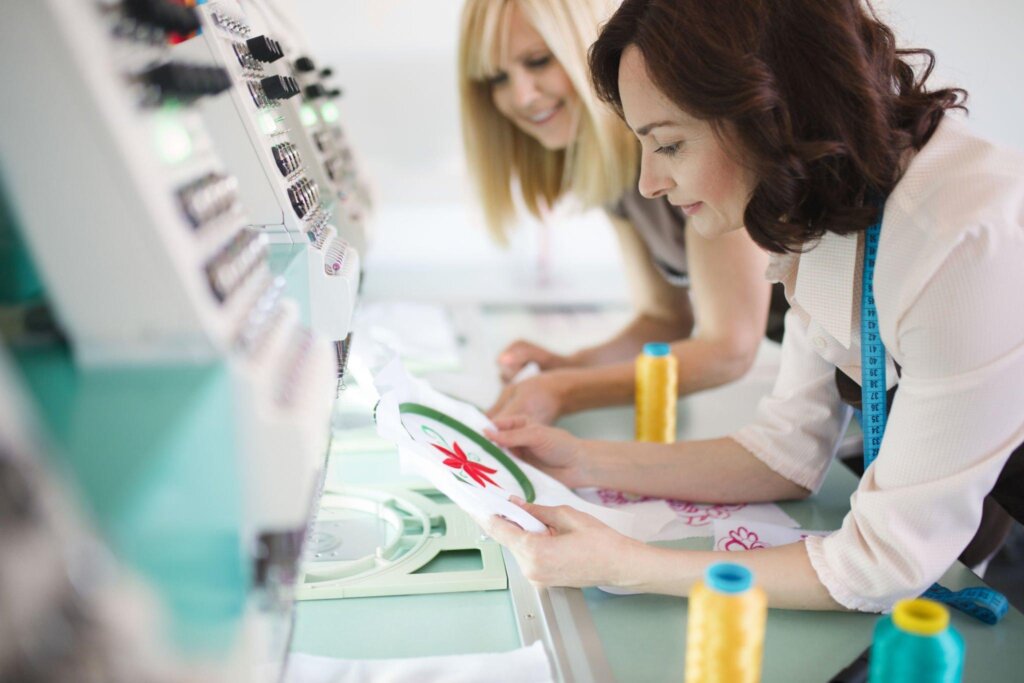
There are a number of fundamental distinctions between screen printing and embroidery, two common processes used to create unique garments.
- Process And Technique
Screen printing is all about making a stencil (or screen) for every color you want to use in your design. So, you put the stencil on the clothes and then use a squeegee to push ink through the stencil and onto the fabric. Easy peasy! So basically, we do the same thing for every color in the design, which makes it look like it has layers.
Embroidery is when you take a needle and thread and stitch a design right onto the fabric. So basically, the design gets turned into a digital format, and then a fancy embroidery machine does its thing and stitches the pattern onto the clothes.
- Design And Detail
Screen printing is great for designs with big blocks of color and cool, eye-catching graphics with lots of contrast. But it’s not great for fancy designs or designs with tiny details. Screen printing can sometimes make the fabric feel a bit bumpy because of the ink layers, which might not be cool for some designs.
Embroidery is great for small, detailed designs or text because it lets you get precise. Embroidery can add some texture and depth to a design. The stitching raises the threads off the fabric surface, giving it a cool 3D effect.
- How Long Will It Last?
Screen printing is usually not as tough as embroidery because the ink can crack and fade after washing and wearing it many times. But hey, if you take good care of it, it can last a long time.
Embroidery is super tough and can last a long time. The stitching is like part of the fabric itself, so it won’t get messed up from wear and tear. Embroidery is super popular for sports teams, work uniforms, and clothes that will get a lot of wear and tear.
- How Much And How Many?
Screen printing is usually cheaper than embroidery for lots of clothes because it’s faster and easier to do. Hey, the more you order, the cheaper each piece gets.
So you know, embroidery vs screen print can be more expensive if you’re ordering a lot of clothes. It takes longer and requires more work. But if you only need a few clothes embroidered, it can be a cheaper choice since you don’t have to pay as much for setup and there’s no minimum order.
- Suitability
If you’re looking for some cool print for business t-shirt design ideas or polos, embroidery is usually the way to go. Embroidery on these things is seen as a fancier. Embroidery is usually the way to go for caps and outerwear as well. So, sometimes polo shirts for tradesmen need a big logo on the back. Screen printing might be a better way to do it.
If you’re looking to print on t-shirts or other light clothes, screen print embroidery is the way to go. Sometimes embroidery can be too much for t-shirts, and you might see some puckering around the logo because the stitching pulls on the fabric. Screen printing is way better for big logos and designs because it feels softer than embroidery. This works for t-shirts because they have a lot of space to decorate on the front and back.
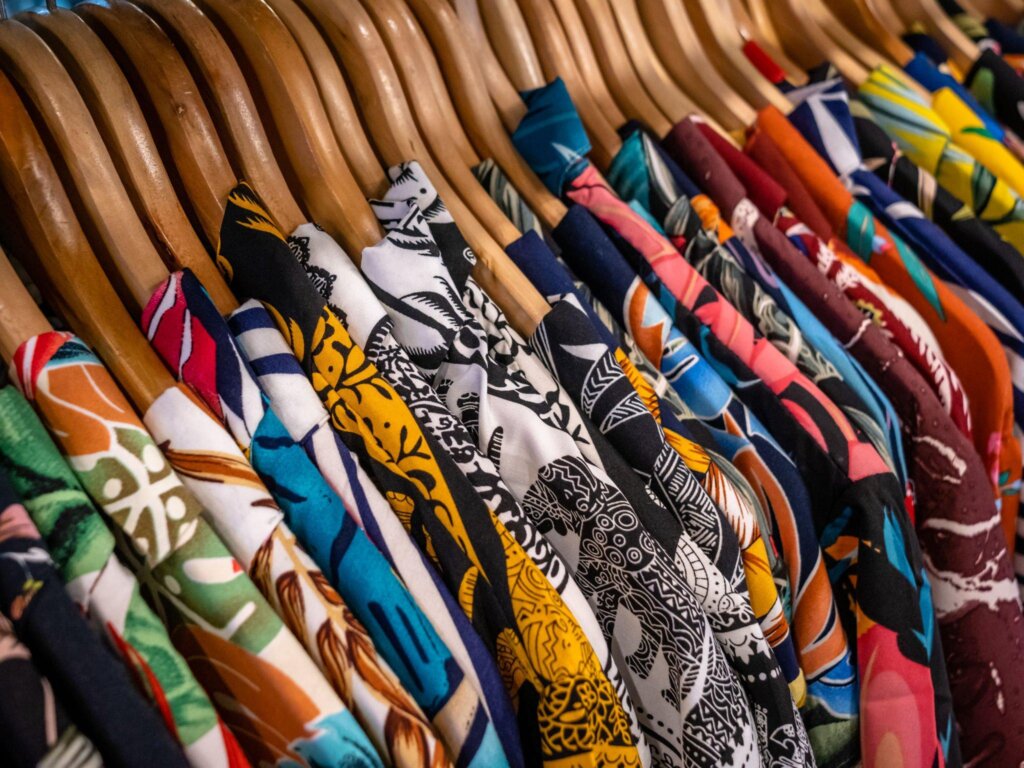
- Color Options
Screen printing is sick because you can use all sorts of colors in your design, even neon and metallic ones. The ink they use for screen printing is made to be super bright and last forever.
But embroidery only uses thread colors, which are not as many as ink colors. Some fancy embroidery machines can make designs with different thread colors, but they still don’t have as many colors as screen printing.
- Size And Placement
Screen printing is great for a big t-shirt design placement guide because you can put in a ton of details. But sometimes it’s tough to get all the little details or tiny text with screen printing.
Embroidery is great for small designs and text because the printing stitching can be super precise. Also, embroidery can go on different spots on the clothes like sleeves, pockets, and collars, but screen printing is usually only on the front, back, or sleeves.
- How Does It Feel?
Screen printing makes the shirt look smooth, and embroidery makes it look bumpy. The texture difference can change how the clothes feel and look, you know? So, screen printing is great for a clean and even look on clothes, while embroidery is perfect for adding some texture or a 3D vibe.
- Customization
Screen printing is awesome for making a bunch of clothes with the same design because it lets you make the same picture over and over again. Embroidery is great for making things unique! You can put any name, logo, or design you want on each piece of clothing. That’s why embroidery is so popular for things like hats and bags—people love to personalize them with their names or initials.
A Look At Embroidery’s Pros And Cons
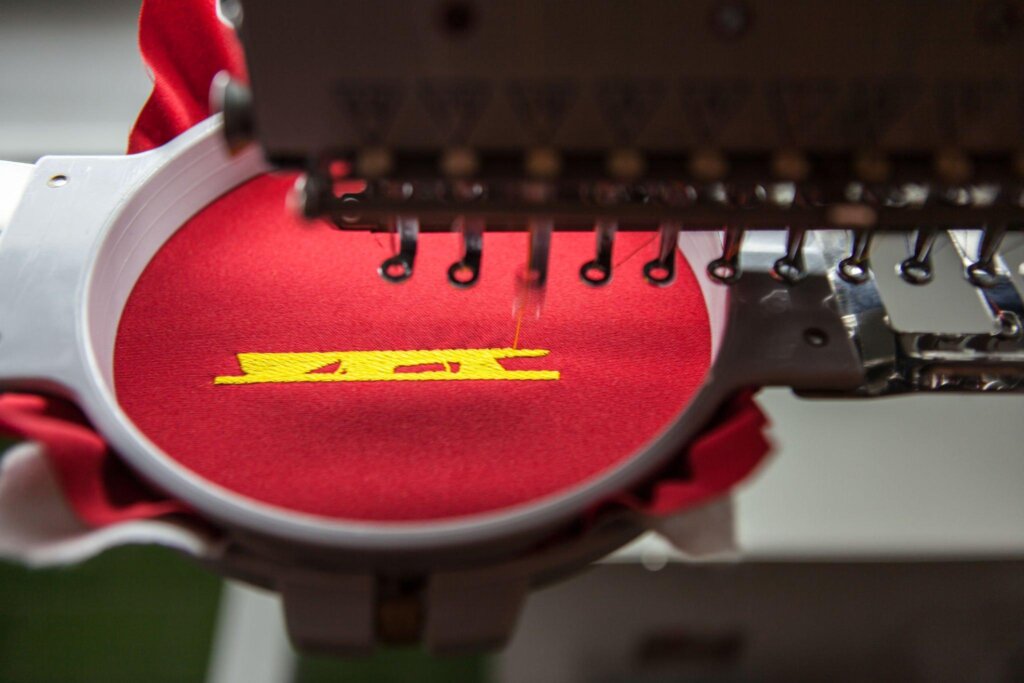
- Versatility
Different types of needlework are available for the type of t-shirt prints, such as flat embroidery, puff embroidery, and patches. Because of its adaptability to a wide range of fabrics, embroidery is a versatile choice.
Embroidery patches, for instance, look great on beanies and other headwear. Denim benefits greatly from both flat and puff embroidery techniques.
- Durability
Sturdy polyester threads are used in embroidered vs screen printed. These fibers can survive the harsh conditions of industrial settings, including bleaching, commercial laundering, and heavy rubbing. Embroidered patches are so reliable that they are even used on military clothing.
- Professional Look
Garments embellished with embroidery designs have a more polished, expert air to them. They serve both marketing and social purposes, which is why they are prominently shown on corporate and military clothing.
- Color Has No Impact On Pricing
The number of colors used in your design will not affect the final price of your embroidery project. Our machines can handle up to 15 different thread colors, and we charge a flat rate for the pallet while charging by the stitch. This price structure gives you the most leeway to express yourself through color.
- Unrealistic With Color Gradients
It’s more challenging to create a seamless transition from one color to another with embroidery threads. Their lack of intermediate tones makes them ideal for sudden color shifts in design.
- Not Suitable For Waterproof Garments
Needles in stitch and print machine for embroidery can puncture waterproof fabrics. The needles will make holes in your clothing, allowing moisture to seep in. While embroidery is still an option for those who love it, we advise using screen printing for this project.
- Not Appropriate For Compact Writing
You can only shrink embroidery so much and still have it be readable. Embroidery should have a minimum height of 0.25 inches. This increased its exposure and effectiveness. Scaling your logo for left chest or cap placement requires this consideration.
Screen Printing: The Pros And Cons
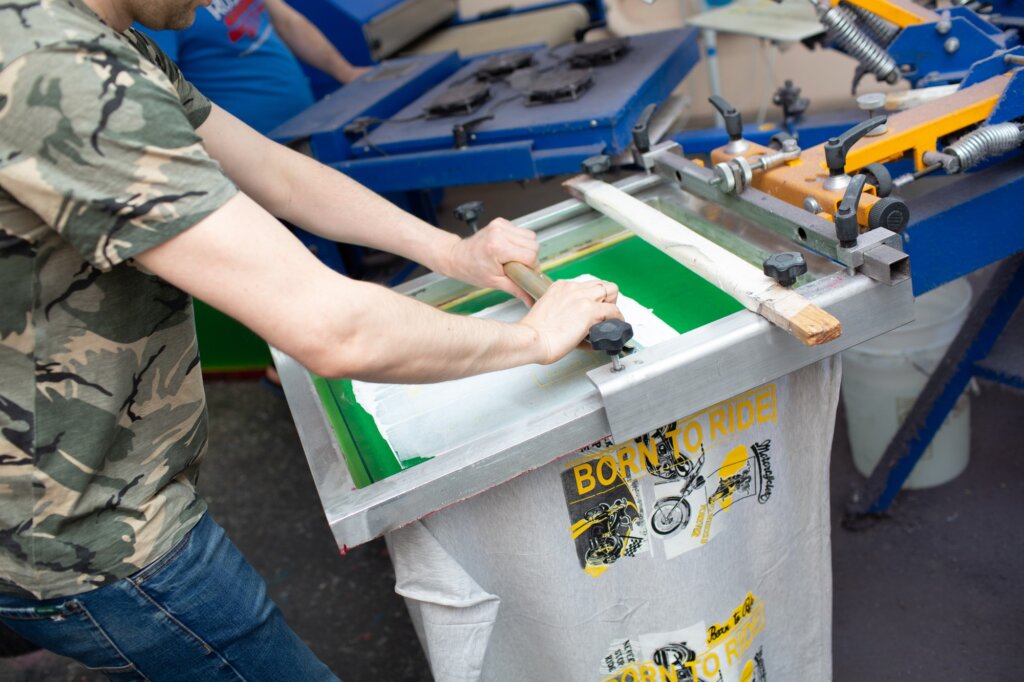
Ordering in bulk saves money because a single mesh screen may be used for several different devices. Using this method, the cost of creating the screens is kept low while being distributed evenly among all printed products.
- Optimal For Lightweight And Unique Garments
Needles of any kind are unnecessary for the screen printing process. Therefore, it can be used on lightweight outerwear like hi-vis vests and waterproof coats.
- Appropriate For Compact Writing
Detail is better captured by screen printed vs embroidered. Screen printing, for example, avoids the difficulties associated with embroidery when it comes to small texts.
- Perfect For Use With Color Gradients
Using a screen printing technique, you may make really intricate pictures. With this capability, intricate graphics with gradient colors, such as rainbows and logos, may be printed with ease.
- Colors Of Ink Vary According To Fabric And Garment
The color of a shirt can show through the ink depending on the dye used to color the garment and the material the shirt is made of. For instance, the intended color of the ink will be lost or subdued if it is printed on a black shirt without first printing an under base. The same idea can be applied to textiles. Cotton, in contrast to synthetic fibers like rayon and polyester, is a natural fiber. Prints made with these synthetic materials may not be as vivid. Experts of t-shirt manufacturers for screen printers knows how to help their clients avoid these problems.
- The cost varies depending on the colors
Colors have an impact on the cost because of the necessity for separate displays. If you’re on a strict budget, the wide range of prices can stifle your imagination. However, printing a large quantity of the same multi-color design can help you save money.
Which Is Better For You: Embroidered Or Screen Printed?
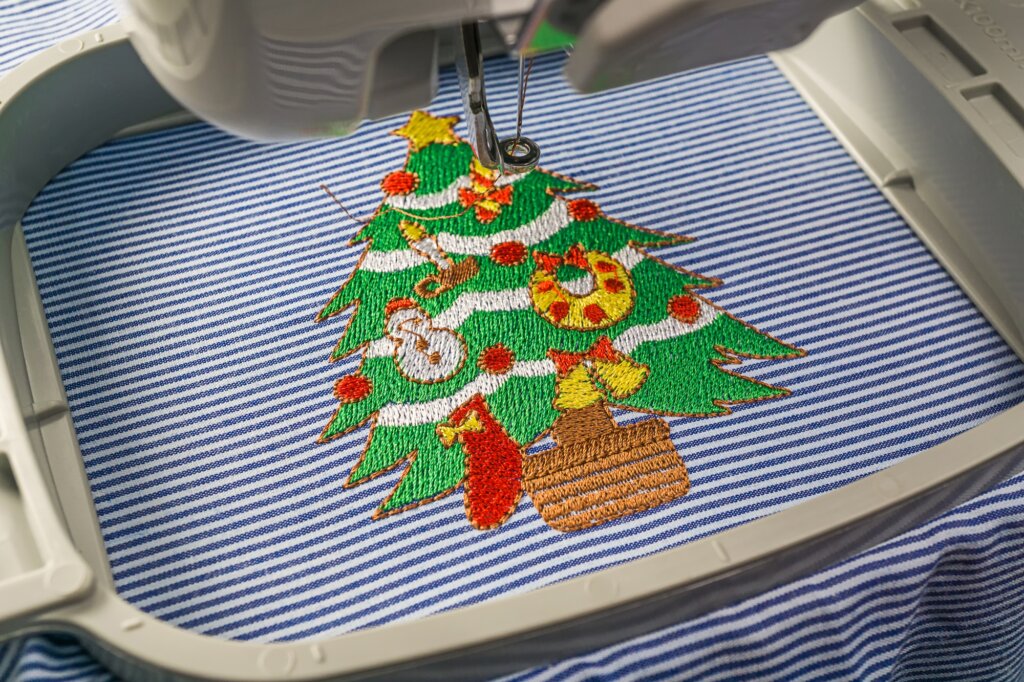
The choice between embroidery and print should be made based on the individual’s tastes and requirements. Some things to think about are as follows:
- Design Complexity
Embroidery is a great choice if your design includes a lot of tiny details or a lot of text. Unlike screen printing, which may not be able to faithfully replicate minute features, Embroidery can reach a great level of detail and precision.
- Durability
Embroidery may be the best option if you want your design to last through several washes. Stitching is interwoven into the fabric, making embroidery more long-lasting than screen printing.
- Quantity
Screen printing could save you money if you need a lot of the same shirt printed. When the same design needs to be printed on many clothes quickly and cheaply, screen printing is the way to go.
- Appearance And Texture
An embroidery is a great option if you want your design to look textured and three-dimensional. Embroidery gives the fabric a textured look by lifting the threads above the surface. A flat, smooth surface is the result of screen printing.
- Customization
Embroidery is a great choice if you want to add a unique name or emblem to each item of clothing. While a fresh screen must be made for each colorway in screen printing, embroidery allows for infinite variation.
Conclusion
screen print and embroidery each have their advantages and disadvantages, and the method that will work best for your needs will depend on a number of variables, including the complexity of your design, the number of garments you need to be printed, and the type of fabric. Get in touch with an expert garment printer if you need assistance deciding between screen print vs embroidery which is ideal for your needs.



